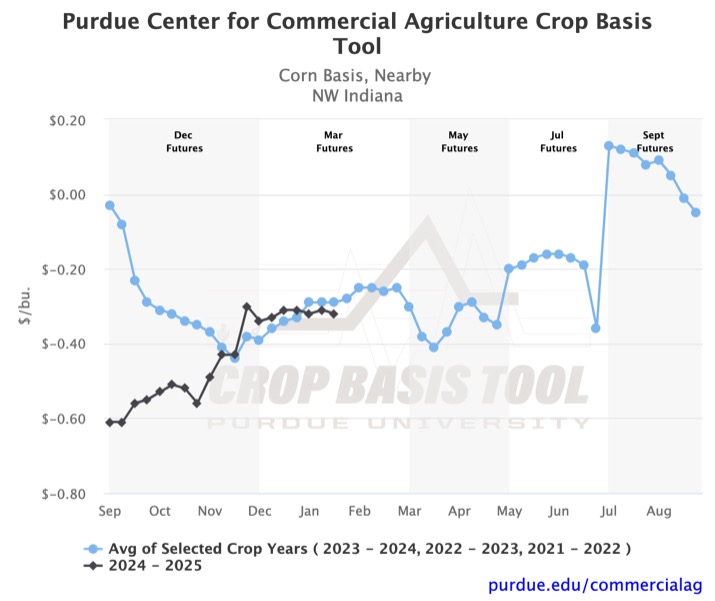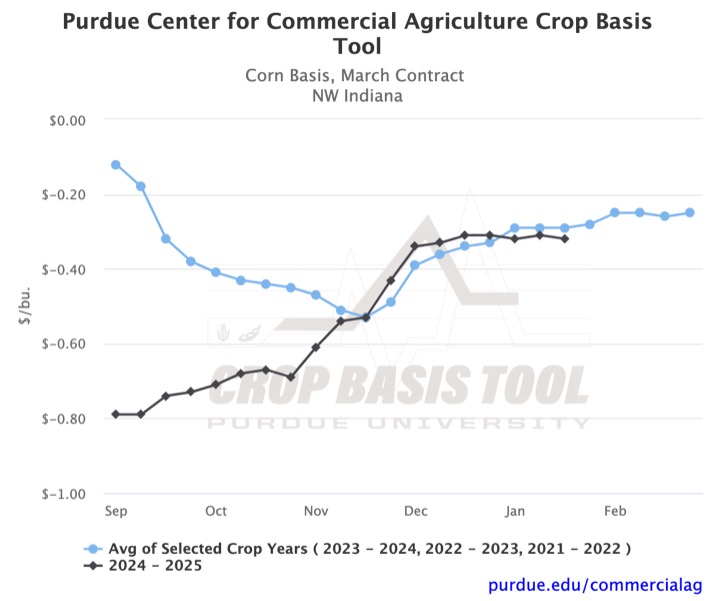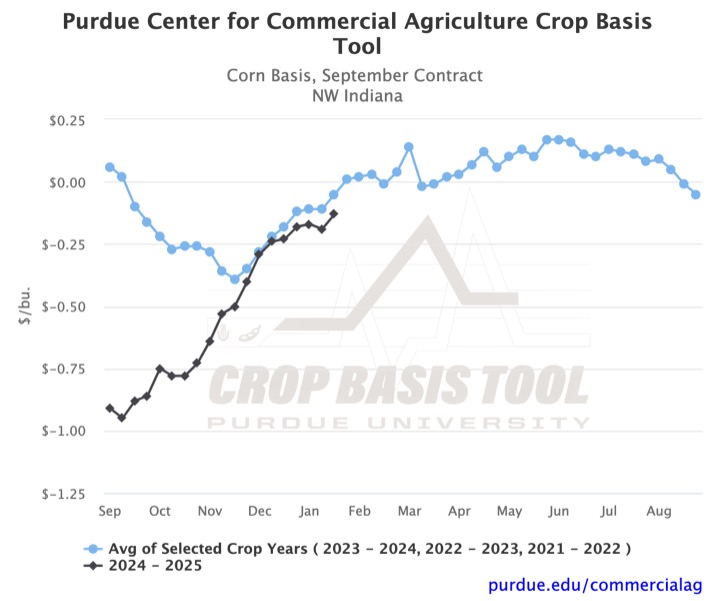January 17, 2025
Indiana crop basis to nearby contracts are stable through the first half of January
by Josh Strine
Through the first three weeks of January, corn and soybean basis have been stable or weakened slightly. This is a continuation of the stabilization and slight weakening that started in December and follows statewide strengthening throughout November. Before November, the 2024-2025 crop basis levels were well below the three-year average. The aggressive strengthening in November moved the current year’s basis more in line with the historical average. The 2024-2025 basis has followed the historical trend closely ever since.
Figure 1 depicts the nearby corn basis for Northwest Indiana. The patterns discussed in the previous paragraph are very evident. Through November, corn basis to December futures strengthened by $0.19/bu. Since the first week of December, corn basis to March futures stayed within a $0.03/bu. range and was -$0.32 as of January 15th. Based on the three-year average, continued stability or slight strengthening may be forecasted over the next five weeks. Similar patterns in corn and soybean basis have been observed across the state with differing levels of variability.
Figures 2 and 3 show the corn basis in Northwest Indiana for March and September futures, respectively. While both basis are calculated on the same regional cash prices, the disparity in the movement of futures contracts results in very different patterns. Over the past six weeks, the basis to March contracts strengthened by $0.02/bu. The basis to September contracts has strengthened by $0.16/bu. during the same period. It is important to understand how movement in cash or futures prices can affect your local basis. The historical trends also project different levels of strengthening over the next five weeks. As always, you can visit the Purdue Center for Commercial Agriculture Crop Basis Tool to see your local basis and what the historical trends suggest future movement may be.
TAGS:
TEAM LINKS:
RELATED RESOURCES
UPCOMING EVENTS
December 1 & 8, 2025
Join Purdue Extension for a two-part workshop designed to help you gain a clearer understanding of tax planning essentials. The first session on December 1 will focus on the fundamentals of farm taxes, with particular emphasis on strategies that can be used in a low net income year. The second session on December 8 will focus on key tax strategies and will allow plenty of time for questions. Registration cost is only $20.
Read MoreDecember 15, 2025
This program provides in-depth coverage of agricultural and farm tax issues. In addition to covering timely tax issues, we will cover disaster tax issues, depreciation and expensing farm assets, retirement planning for farms, and tax planning in low-income years. This year’s webinar will be co-taught by a team from Ohio State and Purdue Universities.
Read MoreJanuary 27 or 28, 2026
Farm Shield is more than a conference, it’s a commitment to helping agricultural families build resilience and plan for a secure future. Don’t miss this opportunity to protect your legacy!
Read More


